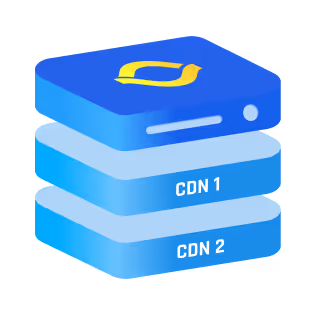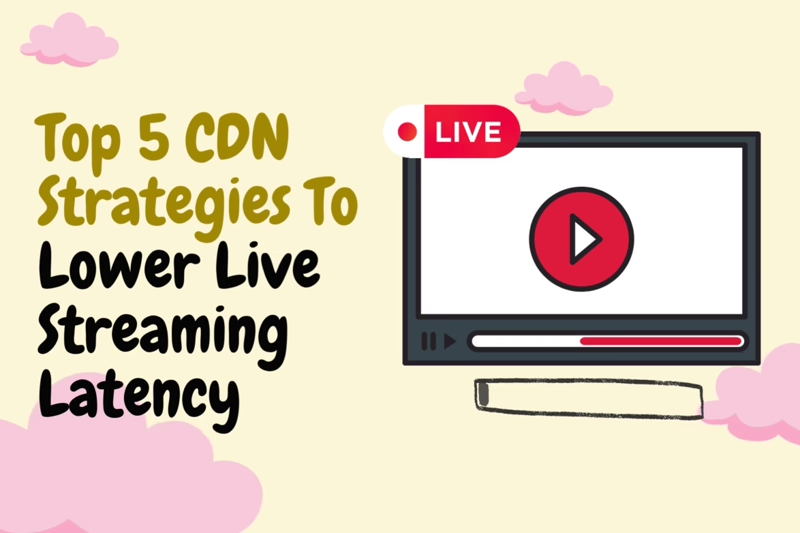What You Should Know About CDN Commitment
You've probably heard the term CDN commitment thrown around if you're considering using or migrating to a CDN provider. But what exactly does it mean, and why should you care? Let's simplify this.
.gif)
A CDN, or Content Delivery Network, helps your content load fast, whether it's a website, video streaming (OTT content delivery), or app resources. But to get the most from a CDN, you need to understand what commitment means and how it impacts your costs and experience.
The Importance of CDN Commitment
Think of CDN commitment like signing up for a phone plan—you agree upfront to use a specific amount of bandwidth or storage, usually for a fixed time. In return, your CDN provider gives you better pricing and service levels.
When your business relies on content delivery (especially OTT content delivery, where video quality and speed matter), commitment is vital. It directly affects:
- How much you'll pay (cdn storage pricing)
- The quality and reliability of service you get
- How flexible you can be with your CDN usage
In short, your CDN commitment shapes both your performance and your budget.
The Commitment You Didn’t Sign Up For
Not all CDN commitments are created equal—and some come with strings you didn’t see coming.
Vendors rarely say they’re locking you in. But if they’ve built their platform around custom APIs, have non-standard caching rules, or make it hard to extract your data without extra fees, you’re already stuck.
And even if you’re unhappy with the service, you can’t just walk away without paying for it. You either eat the penalty, or wait months till the term ends. Meanwhile, your traffic suffers, and your team’s stuck managing a service they don’t trust anymore.
Tip: Before you sign anything, ask them what the offboarding process looks like. If it’s vague, complicated, or they avoid the question, that’s your red flag.
{{promo}}
Factors Influencing CDN Commitment
Before deciding your CDN commitment level, think about these factors clearly:
- Traffic Volume: How many users visit your site or stream your content?
- Content Type: Videos (OTT), images, and software downloads each use CDN differently.
- Storage Needs: CDN storage pricing can vary significantly based on how much data you store and deliver.
- Future Growth: Will your usage increase significantly in the next year or two?
CDN Commitment vs Pay-as-You-Go
So, should you commit to a CDN, or stick with a pay-as-you-go model? It depends on how predictable your traffic is—and how much control you want.
If you’re just starting out, or your traffic fluctuates (like many OTT platforms), pay-as-you-go might actually save you from overcommitting. But once you know your patterns, switching to a commitment plan can seriously reduce your cdn storage pricing and delivery costs.
Evaluating Your CDN Provider's Commitment
CDN commitment goes both ways—you commit to them, but they should also commit to you. When looking at providers, always ask yourself these questions:
- Does the provider clearly explain cdn storage pricing without hidden fees?
- How helpful and responsive is their support team?
- What happens if you need flexibility? Can they handle sudden spikes in traffic without penalizing you?
- What's their track record with successful cdn migration projects?
Remember, choosing the right CDN isn't just about features—it's about trust and reliability.
{{promo}}
Red Flags in CDN Commitment Contracts
Let’s be real—most people don’t read every line of a CDN contract. That’s exactly where problems creep in. Here are the most common red flags you need to watch out for before you sign:
- Egress or “exit” fees when moving your data out
- Minimum usage penalties if you don’t hit your committed bandwidth
- No rollback clauses if your usage drops mid-term
- Opaque billing metrics that make it hard to track what you're actually paying for
- Non-portable custom logic that prevents you from easily migrating
If a provider is serious about building a long-term partnership, they won’t hide these terms. If they are vague or pushy about pricing structures, walk away.
Tip: Ask for the billing calculator or real customer usage examples. If they dodge it, that’s your sign.
Strategies to Enhance CDN Commitment
You're probably wondering, "What if I've already chosen a provider but want a better CDN commitment?" Don't worry; here are some strategies to optimize your CDN experience:
- Negotiate Upfront: CDN providers usually offer better deals if you discuss your expected usage clearly.
- Regularly Review Usage: Regular check-ups help ensure you're not paying too much for unused resources or too little for peak needs.
- Consider Multi-year Agreements: Longer terms can unlock substantial savings if you’re confident in your CDN needs.
- Plan CDN Migration Wisely: If you find your current provider isn't living up to their promises, a thoughtful migration can save you headaches and money.
How to Get a Better Deal
Here’s where you can actually outsmart the process. CDN providers expect negotiation—but most people don’t even try. That’s your opportunity.
Here’s how to play it smart:
- Always ask for test credits before you commit
- Negotiate ramp-up terms, especially if you’re migrating or launching new apps
- Push for burst bandwidth buffers without overage charges
- Request detailed billing visibility via dashboard or API
- Ask for rollover bandwidth in case you underuse one month
- Tie commitment to traffic, not just time—some providers will flex if you commit to volume over a longer period
If you don’t ask, you don’t get. Most of these aren’t even “special”—they’re just buried unless you know to request them.
When to Consider CDN Migration
If you're frequently unhappy with your CDN performance or facing surprises in billing, it might be time to move. CDN migration sounds intimidating, but with good planning, it’s simpler than you'd think. Consider migrating when your CDN migration checklist has:
- Your provider isn’t transparent about pricing.
- Your commitment terms aren’t flexible.
- Your OTT content delivery performance is consistently below expectations.
Don’t feel trapped—there are plenty of good providers willing to earn your business.
{{promo}}
Planning a Clean CDN Migration
Once you’ve decided it’s time to move on, the next step is making the migration as smooth as possible. Here's how to avoid downtime, performance issues, or unexpected costs during the switch:
- Identify which assets are cached, where your storage buckets live, and what custom configurations are in place (like edge rules or WAF settings).
- Most CDN providers let you set up a trial alongside your current one. You can use DNS-level traffic splitting or specific path testing to compare performance.
- Replicate routing rules, headers, compression, TLS settings, and cache behavior before cutover.
- Use tools like curl, CDNPerf, or synthetic monitoring to confirm things are working under load.
- After switching over, keep a close eye on origin hits, 5xx errors, cache hit ratio, and usage spikes.
- Keep your old CDN active for a short window until you’re confident there’s no rollback needed.
Migration is strategic. And the more planned your switch is, the less impact it’ll have on your users or budget.
Questions to Ask Your CDN Rep Before Signing
Want to sound like you know what you’re doing on that sales call? Ask these questions. If the answers are vague, run.
- What happens if we exceed or fall short of our commitment?
- Do you support clean migration away from your platform?
- Is there a trial period or test phase before full commitment?
- What pricing do you offer for OTT-heavy content and storage?
- Can we renegotiate if our usage drastically changes mid-contract?
- What tools or dashboards do you offer to monitor real-time usage and billing?
- Is support tiered based on commitment? What do we get at our level?
You’re buying a relationship. Ask like you’re building one.
Where Most Teams Slip Up
A lot of teams rush into CDN commitments thinking they’re saving money—when they’re actually locking in bad deals. Here’s how the mistakes usually happen:
- Overestimating traffic based on launch hype or best-case scenarios
- Underestimating storage, especially for long-form OTT content
- Ignoring cache hit ratios, which can inflate origin costs
- Forgetting about non-traffic costs, like TLS handshakes, WAF, or logs
- Assuming they'll be able to switch later—when lock-in hits, it's too late
Reality check: It’s better to under-commit and renegotiate later than over-commit and burn the budget you can't recover.
Final Thoughts
CDN commitment doesn't have to be complicated. It's all about knowing your needs, asking the right questions, and being proactive. When you approach CDN commitment clearly and conversationally, you’ll make smarter decisions, save money, and get better performance.
Remember: good CDN commitment is about a partnership—make sure your provider values your business as much as you value theirs.



.png)
.png)
.png)




